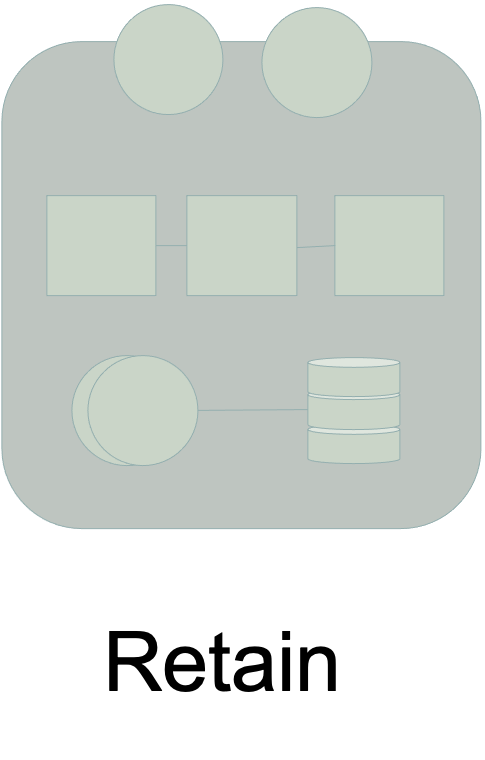Retain

Benefits
When planning an application modernization or a move to cloud it’s likely that there are some applications that will not change in any way. There are a number of possible reasons for this - for example it could be a specific technology (e.g. mainframe applications) or regulatory (sensitive data), or it could be that there would be no return on the cos of change. (see Net)
If you do decide that an application should remain on-premises, you may still be able to take advantage of the public cloud for some environments. A typical production application may have up to eight other environments that can be considered for the cloud. Whilst this will not be always possible (e.g. mainframe apps), in may cases development and test systems could be moved to the public cloud even if the production system remains on-premises. Many of these have highly transitory or variable workload profiles, and so the pay-as-you-use model on public cloud infrastructure could result in substantial savings. Similarly, business continuity systems could also be hosted in the cloud in many cases. We cover these in a little more detail in Business Continuity and Lifecycle Hybridization.
Benefits
| Time to migrate |  |
| Technical difficulty |  |
| Strategic Value |  |
While the retain option would appear to be the least risk and simplest, in reality it is a little more complex than that, and especially as the application gets older. Over time, the cost of maintaining systems can increase as the technology and approaches slowly age. Hardware, software and technology platforms can lose support or, at the extreme, become deprecated. While we are still running mainframes today, many other technologies have appeared, evolved and disappeared in the meantime. A do nothing retain policy is never a free option and may not even be the cheapest option.
When considering a retain option, think carefully about how the system can continue to be supported over time. Vendor roadmaps should be taken into account, and so will the skills available in your organization and in the marketplace.
In many cases, a replatform may be a better option as this enables modernization of the underlying hardware, software and platform with minimal business impact and cost.